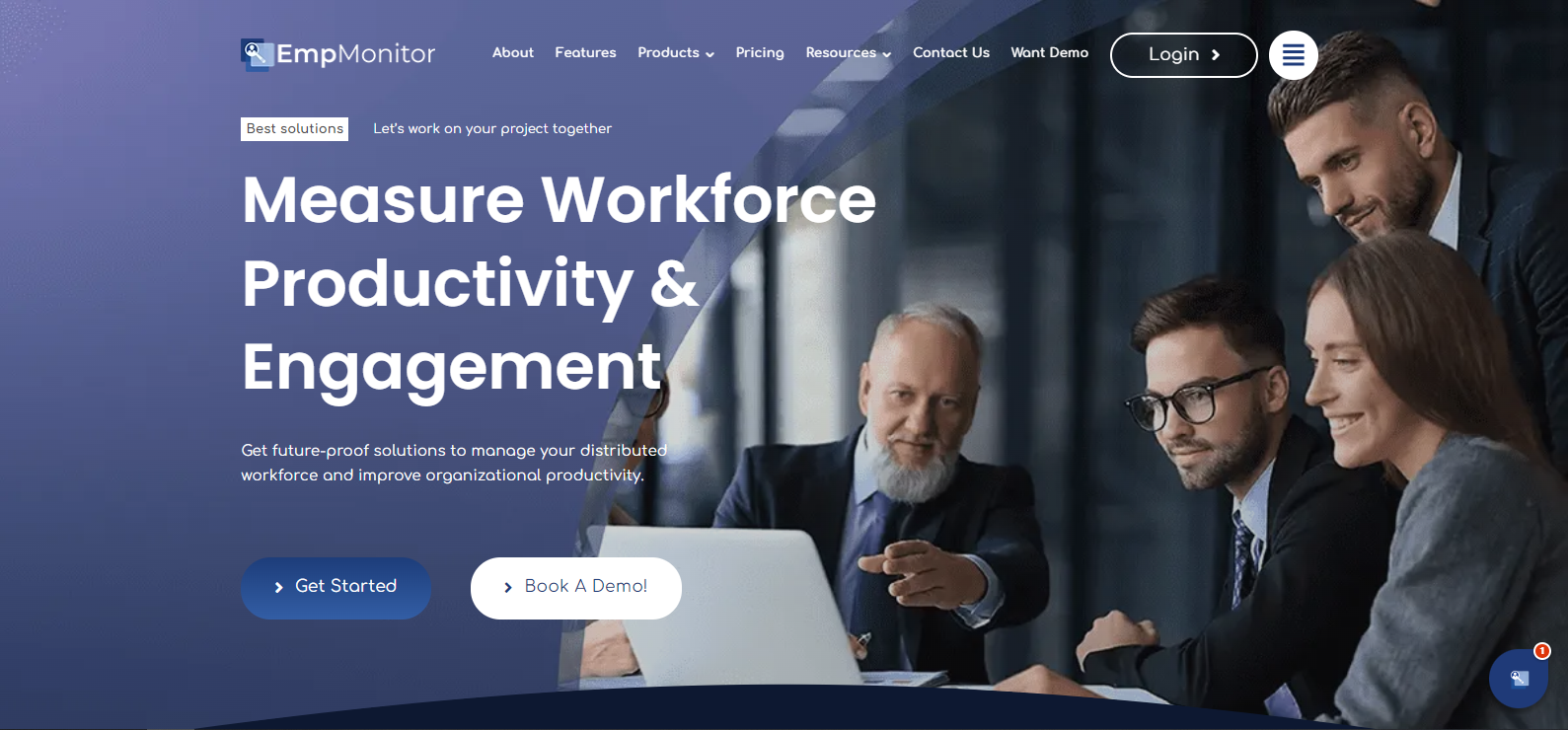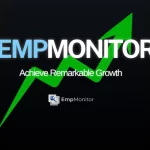Have you ever wondered why some teams excel effortlessly while others struggle with miscommunication and disarray? In a rapidly developing work environment, effective staff communication is not just a necessity; it’s a cornerstone of organizational success.
As businesses increasingly embrace remote work, hybrid models, and global teams, how we communicate with our colleagues can significantly affect productivity, engagement, and overall harmony within the workplace.
Irrespective of whether you are managing a small team or overseeing a large corporation, understanding and optimizing staff communication can pave the way for a more connected, efficient, and innovative workforce.
In this article, we will explore six interesting reasons why is communication important, and how leveraging effective communication strategies can transform your organization.
Hit ‘Play’ Button & Tune Into The Blog!
What Is Staff Communication?
Before diving into the reasons, it’s crucial to understand what staff communication entails. Staff communication involves the sharing of information, ideas, and feedback among employees within an organization to foster collaboration and ensure smooth operations.
It encompasses various forms, including face-to-face conversations, emails, instant messaging, video calls, and collaborative tools.
Effective team communication aligns all team members with organizational goals, ensures understanding of roles and responsibilities, and provides opportunities for contribution to discussions and decision-making processes.
Understanding staff communication is just the beginning. To truly optimize team dynamics and performance, try EmpMonitor’s project management and workforce management solutions. From task management to productivity tracking, our tools streamline operations and offer key insights for managing your workforce and projects.
Six Crucial Reasons Why Staff Communication Matters!
Understanding the role of employee communication is essential for achieving organizational success. These six key reasons highlight how effective communication can enhance different aspects of your business.
Let’s explore how clear and consistent communication contributes to a thriving workplace.
Boosts Employee Engagement and Motivation
Effective staff communication plays a crucial role in how engaged and motivated employees feel. Communicating expectations helps employees understand their roles and responsibilities, leading to greater job satisfaction and a stronger sense of purpose.
Open employee engagement communication channels also enable employees to provide feedback and voice concerns, making them feel heard and valued, which boosts morale.
Clear updates about the company’s direction, goals, and successes foster a sense of belonging and alignment with the organization’s mission, driving higher motivation.
By setting clear expectations, providing feedback opportunities, and fostering organizational connections, we can increase engagement and motivation. This can lead to increased productivity and employee satisfaction.
Promotes Workplace Harmony and Reduces Conflict
Miscommunication is one of the primary sources of workplace conflict. Clear, open, and consistent communication helps prevent misunderstandings and reduces the possibility for disputes to arise. When employees and management communicate effectively, it addresses issues and resolves them quickly before they escalate.
It promotes a culture of trust and respect, which is essential for maintaining harmony in the workplace. Establishing clear conflict resolution policies and encouraging active listening also ensures a positive and stress-free work environment.
Fosters Collaboration and Innovation
Collaboration thrives in environments where communication is transparent and accessible. Open communication channels encourage the free exchange of ideas, allowing teams to collaborate more effectively. This openness leads to better innovation as diverse perspectives are shared and considered.
Breaking down communication barriers between departments fosters cross-functional teamwork, creating opportunities for joint problem-solving and creative solutions. By promoting a collaborative culture, organizations can unlock the innovative potential of their teams.
Supports Diverse and Inclusive Workplaces
Inclusive communication is crucial in today’s diverse work environments. Clear communication helps employees from different backgrounds and cultures collaborate effectively, breaking down barriers and enabling teams to function as a cohesive unit.
With the rise of remote and hybrid work models, maintaining strong remote team communication is even more critical. Regular, clear communication reduces isolation for remote employees, ensures alignment with organizational goals, and keeps them engaged in team activities.
When all employees, regardless of location or background, feel included and connected, the result is a more dynamic and innovative workforce.
In this context, tools like EmpMonitor can support organizations by providing valuable insights into employee productivity and engagement, helping to manage a dispersed workforce effectively, and ensuring alignment with company objectives.
Enhances Inter-Departmental Cooperation
Good communication is essential for ensuring that diverse departments within an organization work together effectively. When information flows seamlessly between teams, departments can collaborate more effectively, avoiding duplication of effort or competing priorities.
It increases productivity and ensures everybody is working towards the same company objectives. Effective inter-departmental communication facilitates the sharing of resources and expertise, resulting in a more unified and high-performing organization.
Improves Employee Experience and Retention
Effective staff communication significantly shapes the employee experience. When employees are well-informed and have opportunities to provide feedback, they feel more connected to their peers and the organization, leading to an overall improved experience.
Positive communication contributes to higher levels of engagement and job satisfaction, which in turn reduces turnover. Employees who feel valued and well-informed are more likely to stay with the company long-term, improving retention rates and contributing to a stable, committed workforce.
What Are The Different Types Of Staff Communication Channels?
To promote employee engagement and communication, organizations must use the right communication channels that suit their team’s needs. Below are some common and essential staff communication channels:
Intranet and Employee Portals
An intranet is an internal communication platform that centralizes company-wide information. It’s a hub where employees can access important updates, resources, and announcements. Employee portals can also provide a place for internal collaboration, document sharing, and connecting across departments. They are especially useful for onboarding new hires and ensuring that staff has access to critical information.
Face-to-Face Communication
Face-to-face interactions remain one of the most effective ways to communicate. Whether through meetings, one-on-one conversations, or informal chats, in-person communication allows for immediate feedback, clearer understanding, and stronger relationship building. It’s ideal for addressing sensitive issues or complex discussions that require a personal touch.
Email Communication
Email is one of the most widely used communication tools in the workplace. It is efficient for sharing updates, official documents, and important messages across teams. Emails are especially useful for providing written records and details that employees can refer back to later, ensuring clarity and accountability.
Instant Messaging and Chat Platforms
Instant messaging platforms enable employees to quickly ask questions, share files, or collaborate on projects. These platforms provide faster responses than email and are ideal
for informal, day-to-day communication within teams, particularly in hybrid or remote environments.
Project Management Platforms
Project management software centralizes discussions, timelines, and project deliverables, keeping everyone on the same page. With built-in messaging and notifications, these platforms seamlessly integrate relevant communication into daily workflows, reducing the need for separate emails and meetings.
They are especially effective for cross-departmental collaboration and remote teams, providing transparency and accountability throughout every project stage. Platforms like EmpMonitor allow teams to collaborate on tasks, share updates, and track progress in real time, increasing overall project efficiency.
EmpMonitor: A Powerful Project Management Solution
EmpMonitor’s Project Management Software offers a robust solution to manage tasks, track progress, and optimize team collaboration. With an array of advanced features designed to enhance project control, this platform simplifies how teams operate, ensuring smooth execution from start to finish.
Key Features of EmpMonitor’s Project Management Software:
- Customized Access Level: Tailor permissions for each team member, ensuring they have the precise level of access needed for their role.
- Role Assignment: Clearly define roles and responsibilities, making task delegation straightforward and efficient.
- Member Groups: Organize team members into groups, streamlining communication and ensuring cohesive teamwork.
- Project Management: Take full control with the intuitive Project Module, allowing you to create, edit, filter, search, and generate comprehensive reports (CSV/PDF) with ease.
- Task Handling & Subtask Creation: Break down large tasks into manageable subtasks, enabling unparalleled tracking and control over project progress.
- Timeline Monitoring: Stay on top of every detail by monitoring the entire project timeline, including task creation, updates, and completions.
- Kanban Boards & Gantt Charts: Visualize and track project workflows using Kanban boards and Gantt charts, ensuring teams stay aligned and projects run efficiently.
Whether managing a small team or handling large-scale projects, EmpMonitor’s Project Management Software provides all the tools necessary to keep your projects on track, enhancing both productivity and collaboration.
Read More
09 Reasons Why You Need To Improve Communication Skills
Effective Team Strategy For Both Employees And Employers To Excel
Remote Work – Team Communication Cheat Sheet For All Team Members
How To Implement An Effective Staff Communication Strategy
Implementing a robust employee communication strategy is crucial for fostering a productive and engaged workforce. Follow this step-by-step guide to establish an efficient communication framework within your organization:
Assess Current Communication Practices
Evaluate your existing communication methods to identify gaps and inefficiencies. Gather insights through surveys or feedback sessions to understand employee needs and preferences and improve your team’s communication skills.
Define Clear Objectives
Set specific goals for your communication strategy, such as improving team collaboration, increasing transparency, or enhancing employee engagement. These objectives will guide your approach and help measure success.
Choose The Right Communication Channels
Select tools that fit your organization’s needs, including email, instant messaging, video conferencing, and project management platforms. Ensure these tools are accessible to all employees and integrate smoothly into daily workflows. Beyond the basics, companies are also adopting tools like digital business card, digital onboarding portals, and employee directories that make it easier to exchange contact details, share resources, and foster quick networking. Combined with intranets, collaborative dashboards, and mobile-first apps, these modern solutions help employees stay connected and ensure smoother communication both internally and externally.
Develop A Communication Plan
Create a detailed plan outlining how information will be shared. Define the frequency and type of updates, designate responsible parties, and specify preferred methods for different communication types to ensure consistency and clarity.
Foster Open Communication
Cultivate a culture where employees feel comfortable sharing ideas, feedback, and concerns. Implement regular check-ins, feedback loops, and team meetings to encourage ongoing dialogue and transparency.
Train And Support Employees
Provide communication training for employees to ensure they are proficient in using the chosen tools and understand the communication protocols. Offer ongoing support to address issues and keep employees informed about updates to the communication strategy.
Monitor And Evaluate
Continuously assess the effectiveness of your strategy using feedback, performance metrics, and engagement surveys to gauge its success.
Adapt And Evolve
Regularly review and update your strategy to reflect changes in industry trends and emerging technologies, ensuring your communication practices remain effective and relevant.
By following these steps, you can implement a communication strategy that enhances collaboration, reduces misunderstandings, and fosters a positive work environment. Effective staff communication is key to achieving organizational goals and ensuring that employees are engaged and aligned with the company’s mission.
Summing Up
Effective staff communication is crucial in today’s complex work environments. Improving communication practices boosts employee engagement, maintains workplace harmony, supports remote and hybrid teams, and fosters innovation. By investing in a comprehensive communication strategy and utilizing various channels, organizations can resolve conflicts and enhance collaboration efficiently.
Leveraging tools like project management platforms, including EmpMonitor, helps streamline task management and team coordination. As businesses evolve, clear and open communication will remain vital for ensuring team alignment and success. Start refining your strategy today to unlock your organization’s full potential.
FAQs
What are the 5 basic communication skills?
The five basic communication skills are essential for effective interactions. Verbal communication involves speaking clearly and effectively, while nonverbal communication includes body language and tone of voice. Active listening is crucial for understanding and responding appropriately. Written communication conveys ideas through written words, and empathy allows for understanding others’ feelings and perspectives.
What are the 7 C’s of professional communication?
In professional communication, the 7 C’s guide clear and effective exchanges. These are completeness, ensuring all necessary information is included; conciseness, being brief and direct; clarity, using simple language; correctness, avoiding errors; coherence, organizing thoughts logically; concreteness, providing specific examples; and courtesy, being polite and respectful.
What are the key challenges of poor employee communication?
Poor communication leads to misunderstandings, reduced productivity, and low morale. It creates confusion about tasks, hinders collaboration, and negatively impacts worforce management and overall business performance.
How does staff communication impact employee morale and job satisfaction?
Effective communication boosts morale and job satisfaction by keeping employees informed and valued. Poor communication, on the other hand, can lead to frustration, disengagement, and a lack of motivation.
What are the best practices for managing communication in remote teams?
Best practices include staff communication training, setting clear expectations, using multiple communication channels, leveraging project management tools, and ensuring remote employees feel involved in team decisions.
Can improving staff communication reduce employee turnover?
Yes, improving communication increases engagement, builds trust, and creates a positive work environment, which helps reduce employee turnover by addressing concerns and preventing misunderstandings that lead to resignations.
How does staff communication influence company culture?
Staff communication shapes company culture by fostering trust, collaboration, and transparency. Clear communication reinforces shared values, while poor communication can lead to mistrust, disengagement, and a toxic work environment.











